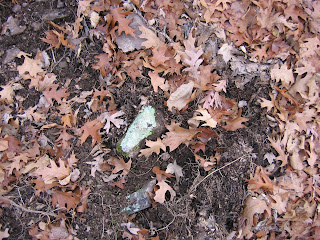In an
earlier post I talked about my gear and briefly mentioned my alcohol stove system. I call it a
system because the combination of the stove, pot, fuel, fire starter, and carrying case are more than the sum of the parts. It's clear why you need each item but you also want some way to carry them so they don't rattle in the pack and so that the individual items are all easy to get to. My SVEA 123R is a very clever white gas system that incorporates the pot, stove, fuel container, and windscreen in one compact bundle. It's even more important for a lightweight stove like a pop can stove. These stoves can be easily crushed in a pack and then won't work properly. After struggling with these issues and looking online at what other people were doing I came up with a system that I like quite well. Apparently other people were thinking the same way because now you can purchase similar kits from several online retailers.

The individual pieces are easy enough to assemble yourself. For a pot I use a 24 oz Heineken can (I don't drink beer so I had to get a friend to drink it for me and give me the can). It's very lightweight and about the right volume. In addition the thin aluminum conducts heat very well so it's quite efficient. Around the top I put some of those
Livestrong bracelets so that I could pick the pot up without burning my fingers. In addition in the kit I have a windscreen, a stove, a pot stand, a fuel measuring cup, a priming dish and a ziplock container that I also use as a cozy and a bowl. The total weight is 4.7 ounces. The idea of a cozy may be new to people who have never done
Freezer Bag Cooking. Basically you combine your dried food and boiling water in a freezer bag and wait while it cooks. The function of a cozy it to keep the heat in while the cooking takes place. I drop the bag into this ziplock and put the lid on. It keeps the heat in well and also serves as a bowl for when it's ready to eat.

The priming dish is the round piece of aluminum pie pan that is under the stove. I put a few drops of fuel there to heat the stove. By the time this fuel is burned the stove is heated and working well. Notice that the stove I'm using now (a
Sputnik stove) has the pot stand built in. Previously I carried a homemade stove and a separate pot stand.

Inside the pot I store a lighter, a bottle of fuel, and an ultralight towel. The towel keeps the rattling down and I find I always need one handy when I'm eating anyway. The weight of the total system with full fuel bottle is less than 7 ounces.

I like alcohol as a fuel but sometimes I like using Esbit instead. Esbit tabs don't require any stove. You just need some place to set the tab and a pot stand. I had a homemade system I used to use but it didn't work as well as I wanted. So for my birthday I bought an Esbit system from
Ultralight Outfitters and gave it to my daughter to give to me (we're not really into surprises around here). It's really quite cool.

It is designed to be used with a Fosters 25 oz beer can (couldn't find anyone who drinks the stuff so I had to buy it and pour it out). The tray that holds the Esbit tablet clips on to the bottom of the can and can be slide up and down. The the whole thing sets in the wire pot stand. If you want to extinguish the tablet before it's consumed you slide the tray all the way up to the bottom of the can and the flame gets snuffed out.

The windscreen works just like you would think it would. But the manufacturer suggests and additional use for the windscreen. The windscreen stays relatively cool so when you ready to pour out the hot water (or drink the hot beverage as the case may be) you grip the windscreen and pick the whole assembly up.

The white strip at the top of the top of the can is actually a strip of silicone that serves as a lip protector if you drink from the pot.
The system packs up quite nicely. You just put the windscreen inside the pot stand and then put the pot and fuel tray inside.

The fit is nice and tight so there is no rattling.

Inside the pot there is plenty of room for fuel tabs, a towel, and matches. I prefer matches for Esbit because it takes a few seconds for the tablet to catch fire. A lighter can get pretty hot in those few seconds. It's much nicer to just light a match and set it on the Esbit tablet. I use
REI stormproof matches which burn very hot for several seconds and can't be blown out by wind.

There's extra room in this system for something else. I'm thinking I may make a cozy out of reflective bubble wrap as described sectionhiker
here. The one thing I will be missing compared to the alcohol system is the ziplock container. That's a bit of a problem since I use it with my Steripen for sterilizing water (see my
Middle Fork hike entry). I'll have to come up with a different solution for that.


























